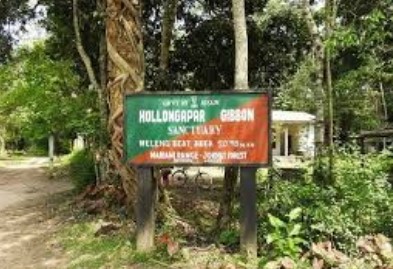Vedanta Ltd’s division – Cairn India – has received the approval by the Union Environment Ministry for exploratory oil and gas drilling in Assam, including the ecologically sensitive Hollongapar Sanctuary. This decision has sparked concerns over potential risks to the local population of endangered hoolock gibbons.
Official documents mentioned Cairn India plans to use 4.4998 hectares of reserved forest land within the sanctuary’s eco-sensitive zone for drilling. Despite the Forest Advisory Committee (FAC) deferring its final judgment, the project has received support from both the State Government and the regional environment office.
Experts are deeply worried about the ecological impact, emphasising that even minor disturbances could disrupt the hoolock gibbons’ habitat. Senior primatologist Dilip Chetry highlighted the risks, stating, “Canopy-based animals like hoolock gibbons are unable to move if their habitat is fragmented.”
Classified as ‘endangered’ by the International Union for Conservation of Nature (IUCN), hoolock gibbons’ population is around 12,000 in Northeastern Bharat, with about 2,000 in Assam. These primates are vital indicators of ecosystem health due to their monogamous and family-oriented nature.
While a forest officer has suggested that the impact could be mitigated with a comprehensive wildlife management plan, the FAC has requested additional comments from the principal chief conservator of forests (wildlife) and the chief wildlife warden.
The regional environment ministry office has stipulated strict conditions for the project, including safety protocols to prevent landslides and erosion. Approval from the National Board of Wildlife is also required due to the project’s location in an eco-sensitive zone. The FAC has noted the presence of other species in the area, such as elephants and leopards, underscoring its ecological significance.
This approval follows the 2020 Baghjan gas blowout by Oil India Limited, which caused extensive ecological damage near Dibru Saikhowa National Park, affecting habitats of endangered hoolock gibbons and Gangetic dolphins. This incident highlights the potential risks of oil and gas exploration in sensitive areas.
In a related decision, the FAC has denied Oil India Ltd’s proposal for extended reach drilling in Dibru Saikhowa National Park, deemed unsuitable for such use by the Supreme Court.
Cairn India is seeking approval for exploration on 1.7155 hectares of forest land in the Namphai reserved forest, part of the Dihing Patkai Elephant Reserve. The FAC has recommended conditional “in principle” approval, contingent on a detailed wildlife conservation plan to address human-elephant conflict.
Cairn India’s corporate communications team has not yet responded to inquiries about measures to mitigate impacts on hoolock gibbons. This silence leaves unanswered questions about the future of the endangered species and broader ecological consequences.
The approval of drilling in Assam’s eco-sensitive areas highlights the ongoing tension between developmental projects and wildlife conservation, leaving the fate of the hoolock gibbon and other species in these regions uncertain as further decisions and actions are awaited.

















